Plastic waste treatment contributes to a positive impact on the environment and people's health. In particular, this is one of the measures to radically reduce the phenomenon of climate change globally/ Currently, according to a report by the Environment Magazine, "The Earth currently contains about 6.3 billion plastic wastes". Plastic waste treatment will significantly improve the pollution of water sources, land sources and the atmosphere. Moreover, the process of treating plastic waste will contribute to the production of reusable products that help save fuel and reduce the amount of new waste released into the environment. These are just the basic reasons for plastic waste treatment. Each country and continent has its own separate measures to work together to solve this problem. Check out the article below from EuroPlas!
1. Asia
According to a post by Quang Ninh newspaper in mid-2021, Asia dominates the list of 10 countries that dump the most plastic waste into the ocean, such as Thailand (5th, 22,800 tons), Japan (9th, 1,800 tons). Therefore, the governments of Asian countries have been establishing many strict policies and measures to thoroughly handle plastic waste over time. To make it easier to visualize, EuroPlas will show you specific examples of how plastic waste is handled in Asian countries in recent years.
1.1. Japan
For example: Japan applies a detailed and meticulously systematized plastic waste treatment model from small scale (households, neighborhoods) to large scale (provinces and cities). The management of daily waste volume starts at the local level. Basically, all localities in Japan divide waste into 4 main groups of quantities: burnable waste, non-burnable waste, raw waste and large waste. Of which, plastic waste is processed according to the raw waste group. Japan equips 4 types of corresponding trash bins in all public areas and neighborhoods so that people can proactively classify them before going through the waste treatment process.
In addition, the Government and ministries recommend that people should clean plastic items or waste before throwing them away to minimize odors and not affect the health of collection staff. For large-sized waste such as vacuum cleaners, televisions, household appliances, mattresses, the waste treatment process will be charged and people must register in advance. The price ranges from 3,000 to about 10,000. Furthermore, Japan's waste disposal culture has been formed from the smallest levels of education and down to every detail of life.
All levels of education in this country are given detailed instructions on how to identify and classify waste. Detailed instructions on plastic waste classification are also posted in public areas such as hospitals, train stations, supermarkets, parks, etc. Normally, burnable waste is collected twice a week, non-burnable waste twice a month, and recyclable materials such as PET bottles, glass, newspapers and cardboard once a week. That is why Japan leads the world in the 3R waste classification process (reduce, recycle, reuse).
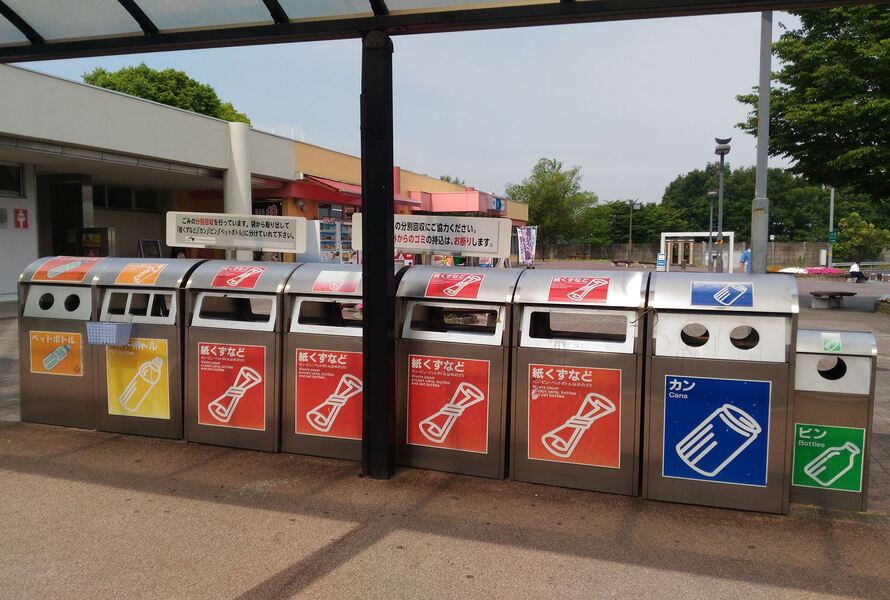
Japan proactively handles plastic waste by sorting it in detail.
1.2. Singapore
Singapore is also one of the leading countries in plastic waste treatment in Asia. This developed country has invented many modern technologies to reduce the amount of waste that must be buried as well as save land area, specifically as follows: Waste incineration technology creates electricity, increases penalties for littering, promotes waste classification into many types as well as widely propagates in the media.
NEA - Singapore's National Environment Agency reported that: The Lion Island releases about 21,023 tons of waste of all kinds into the environment, the majority of which is plastic waste. To solve this problem, the Agency and related ministries have divided the proportion for the plastic waste treatment process, specifically as follows:
-
58% - 60% of the waste is transported to recycling plants
-
41% is sent to waste-to-energy plants
-
The remainder is treated at the Semakau landfill.
Thanks to the method of treating plastic waste through waste-to-energy incineration plants, Singapore has been able to meet nearly 3% of the country's total electricity and save more than 90% of the amount of solid waste that must be buried. Normally, many people think that the method of treating plastic waste by burying will affect the soil and air environment. However, Singapore has been successful beyond expectations with this method. They take advantage of the characteristics of insects and birds to treat buried waste, contributing to balancing the ecosystem as well as enriching the environment.
That is the reason why the Singapore Government has built 2 landfills on Pulau Semakau and Pulau Seking. Currently, these are 2 famous bird watching areas in this country. Since 2001, the Singapore Government has implemented a waste treatment program to increase the recycling rate through sorting waste at the source from households, markets, and businesses.

Semakau Island is used as a landfill and to process plastic waste to generate energy.
Since 2001, the Singapore Government has implemented a waste treatment program to increase the recycling rate through sorting waste at the source from households, markets, and businesses.
1.3. Other countries in Asia
China has issued a list of “highly polluting and environmentally hazardous” products, including “cosmetics and cleaning products containing microplastics” and “microplastic additives”. This is a list to strictly prohibit and limit the maximum use of toxic plastic materials in production, approved and developed by the Ministry of Ecology and Environment. Notably, the plastic products on that list are all banned from circulation on the market from the end of 2022.
In 2014, South Korea announced the "Marine Debris Management Plan" with the goal of limiting many forms of plastic pollution. After pressure from environmental groups, the ban on microplastics in cosmetics was passed in 2016. The law prohibits the sale of products containing microplastics starting from July 2017 and products manufactured before that from 2018. Notably, more than 80% of the Korean population agrees with this plastic waste treatment measure and recommends that the Government increase the penalty level to bring better results for the environment.
It can be said that Japan and Singapore are two typical countries representing the Asian region in handling plastic waste.
2. Americas
The Americas are also one of the continents heavily affected by plastic waste. Typically, Brazil receives nearly 38,000 tons of plastic waste and ranked 3rd in the list of countries that discharge the most plastic waste. Or Argentina faces a situation where plastic waste exceeds the control level of about 1.7 tons of plastic straws. However, these countries still have specific and effective measures to handle plastic waste. Specifically as follows:
2.1. Brazil
Brazil has successfully applied modern technology to the process of handling plastic waste, contributing to promoting the responsibility of both individuals and businesses. All companies in Brazil must connect to the CTR - E system - this is a software that allows businesses to fully declare important information such as: The amount of waste generated, the waste transportation process, indicators of electricity, water as well as warehouse area for waste management.
All data will be stored on the system and closely monitored by local and state authorities. The CTR-E system is defined as follows: "TR-E is a waste collection system based on blockchain technology. They are designed to monitor all stages of the urban waste collection and treatment process, from dumping, transportation, treatment and recycling." This technology has helped Brazil in general and the city of Sao Paulo in particular to be able to handle 25,000 - 30,000 trash bins from nearly 500,000 businesses in the area.
In addition, Brazil has also applied many other technologies in its major cities such as: Automatic trash sorting system, QR codes on garbage trucks, statistical applications as well as automatic plastic waste treatment process. Almost all data and information about the amount of waste and how it is treated are gathered into the same system for strict management in real time.
Waste transport vehicles in Brazil are all licensed by the Government and businesses in this field receive attractive support policies. Therefore, the number of businesses is increasing and contributing to the overall plastic waste treatment process of the whole country.

Brazil Treats Plastic Waste Using Blockchain Technology
2.2.Columbia
Plastic waste pollution has seriously affected the marine ecosystem in Columbia. Therefore, the Government has required strict measures and tight policies to control the use of single-use plastic products. Specific examples are as follows: The Colombian Government has strictly banned the use and circulation of plastic bags smaller than 30x30cm and replaced them with cloth bags or bags made from bioplastics to positively impact the waste recycling process. This measure has helped Columbia reduce about 27% of plastic bag consumption.
In addition, the Colombian government has harmoniously combined socio-economic development and plastic waste treatment by imposing a tax on all plastic bags. Specifically, each Colombian citizen has to pay about one US cent and this number has increased steadily by 50% every year. This measure encourages people to increase the use of plastic products in general and recyclable plastic bags in particular.
2.3.Chile & Argentina
Colombia's neighboring country, Chile, also applied a complete ban on the commercialization of plastic bags in 102 coastal cities of Chile and President Michelle Bachelet agreed to this decree. Furthermore, a survey by the Chilean Ministry of Environment reported that: "Nearly 92% of the Chilean population agrees with the President and recommends that ministries continue to increase policies on plastic waste and plastic bags in the areas of shopping, fashion and tourism services. In particular, this ban has been issued until 2050 and is expected to have a positive impact on 230 settlements. Chile can be proud that it is the first country in the Americas to apply this ban.
The current situation of plastic waste in Argentina mainly comes from the amount of plastic straws discharged into the environment. Data shows that the capital of Argentina has discharged more than 2 million plastic straws equivalent to 1.7 tons of plastic. That is why the Argentine Government has applied a policy to ban the use of plastic products in general and plastic straws in particular in hotels, bars and food and beverage establishments.
Almost all service businesses in the Argentine capital are advised to limit the use of straws to a minimum plastic as much as possible. In addition, plastic pellet suppliers in Argentina are supported by the Government with price and sales policies to easily expand domestic and foreign market share.
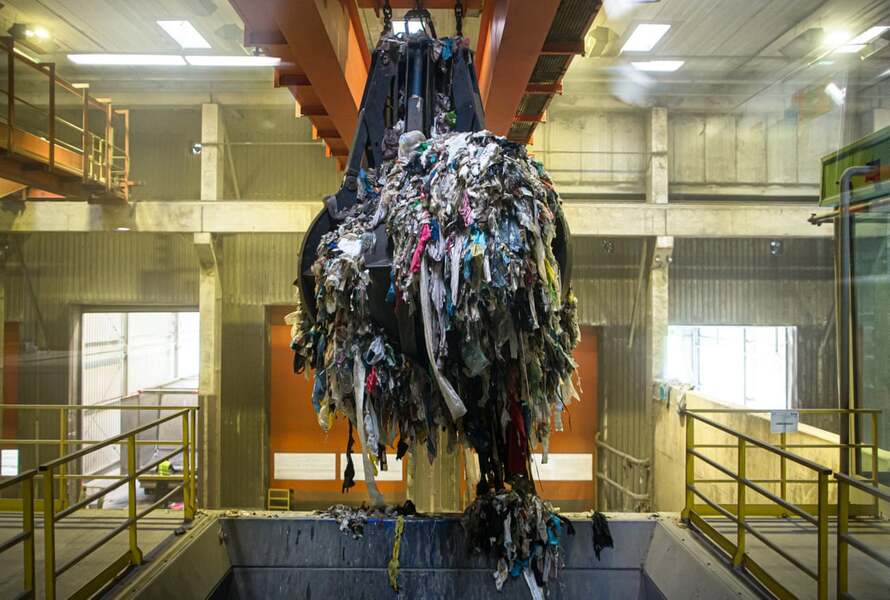
American countries issue restrictions and bans on the circulation of toxic plastic products.
3. Europe
The volume of plastic waste in Europe is mainly plastic packaging with about 180kg of packaging/year. Moreover, experts have commented that the amount of plastic waste that can enter the marine environment in Europe can reach 23 - 37 million tons/year by 2040. Therefore, each European country applies appropriate measures to handle plastic waste
3.1. Germany
The process of plastic waste treatment in Germany begins with a classification process and is known as the “Green Dot” culture. Trash bins are divided into 4 colors corresponding to each type of waste and are placed in all public places. Specifically as follows: Organic waste that is easily decomposed such as leftover food, eggshells, fruit, coffee grounds, etc. is classified into brown trash bins. Plastic waste such as: plastic bags, water containers, plastic cans, etc. is classified into yellow bins. Next, the blue bin is for paper waste such as: old magazines, flyers, old books, paper packaging, or cardboard. Finally, the green bin is for bottles and jars.
To tighten environmental protection policies and properly treat plastic waste, the German Government has stipulated that all types of waste can only be collected and treated when they are properly classified from the beginning. In case, any environmental enterprise is found to be unable to control this, it will be heavily fined. In particular, people will also be disciplined if they do not maintain hygiene and manage waste in their own residential areas. Germany not only classifies waste in detail but also takes full advantage of the benefits of organic waste. Germany also applies a law requiring people to collect organic waste for recycling in biogas plants. Germany has recycled an average of 10 million tons of organic waste per year.
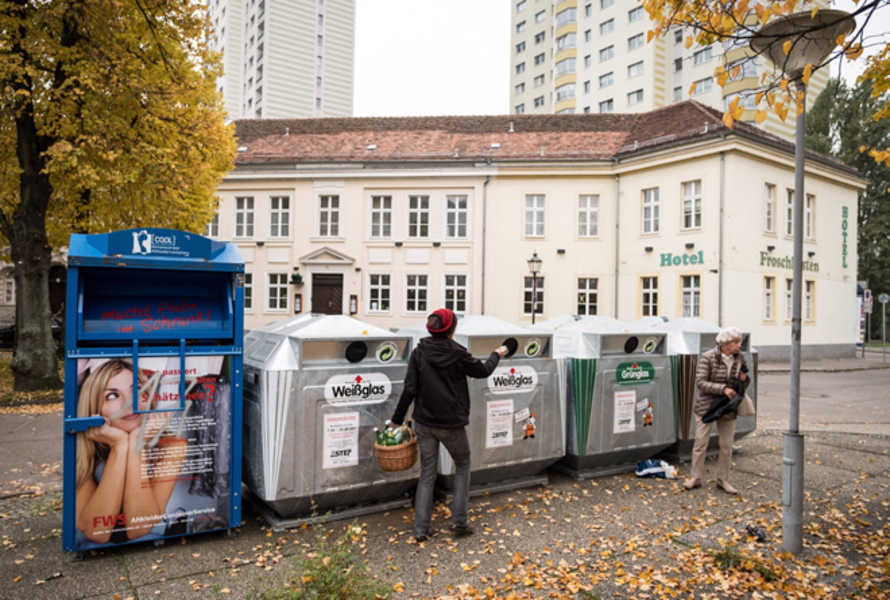
Germans actively recycle nearly 10 million tons of organic waste each year.
3.2. Austria
Technology has been the core foundation that has helped Austria handle plastic waste for many years. This is one of the first European countries to use bacterial enzyme methods to recycle PET plastic products. Enzymes will affect the physical and chemical structure to decompose PET plastic, which makes it easy to convert them into high-quality and environmentally friendly plastic particles.
The application and research of technology has helped Austria achieve certain successes in waste classification as well as minimizing the number of landfills. All Austrians are encouraged to classify waste at home or in public places to support environmental businesses in collecting and processing plastic waste.
In particular, waste must be placed in transparent plastic bags and colored bags must not be used, making it easy for environmental workers to identify and collect quickly. Trash bins in public places are gathered at waste treatment centers located far from the city center to continue the classification process. In the case of large types of waste such as cabinets, televisions, electronic devices, etc., people must contact the processing unit and pay the collection and processing fee for them.
Waste classification is mandatory in the waste treatment process in Austria. Environmental businesses can have their business licenses revoked if they do not carry out this process strictly and accurately.
3.3. Sweden
It is not an exaggeration to say that Sweden has been a pioneer in plastic waste treatment measures in Europe for many years. All households are required to have sorting bins and they are regularly trained in household waste classification skills. This measure not only raises people's awareness but also saves time and costs for waste treatment units. In addition, the regulation clearly states that residential areas must be at least 300m away from waste recycling plants.
A special feature that few countries can compare to Sweden is the garbage collection vehicles that run on recycled energy or biogas.
In addition, all are equipped with automatic odor treatment systems to completely eliminate negative factors to the air as well as the surrounding environment. The garbage collection vehicles have a fairly wide operating range, enough to collect garbage from the entire city. Moreover, they can also handle hazardous waste such as electronics and chemicals.
In addition, about half of all household waste in Sweden is sent to incinerators to be converted into energy. To date, there are 32 waste recycling plants in Sweden. After the incineration process, the amount of ash collected accounts for about 15% of the total initial waste weight. From this ash, the metal will be separated and recycled, the remainder will be screened for use in the construction materials industry.
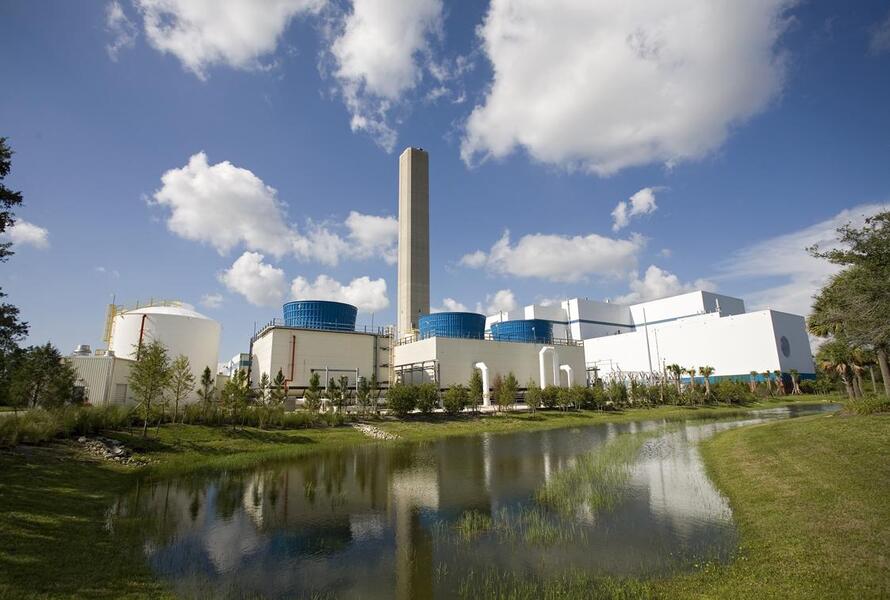
Sweden is one of the European countries with the largest number of waste recycling plants.
4. Bioplastic products at EuroPlas
Bioplastic is one of the effective solutions to help reduce plastic waste and save treatment costs. Moreover, bioplastic plays an important role in the recycling process and is reused many times. EuroPlas is proud to be one of the famous suppliers of bioplastic granules in the Vietnamese and international markets. BiONext bioplastic is a green material solution that helps plastic products to be completely biodegradable after 12 months of use. The product is manufactured from renewable sources such as polylactic acid (PLA), polyhydroxyalkanoate (PHA) or vegetable oils. The most outstanding feature of BiONext is its high biodegradability. Products made from this compound can easily decompose into water, CO2 gas and organic fertilizer after being discarded, without causing residual plastic waste.
In addition, BiONext also possesses superior mechanical properties such as hardness, high durability, good impact resistance and high elongation. Thanks to that, products from BiONext meet strict requirements for both functionality and aesthetics. This material is widely used in the production of packaging, bags, food containers, eating utensils and many other fields. BiONext is divided into... types, specifically as follows:
-
BiONext 102: Bioplastic combined with PLA plastic base and CaCO3 stone set. The ability to decompose after 12 months as well as not causing waste residue supports the easy treatment of plastic waste.
-
BiONext 152: Bioplastic products stand out with impact resistance, surface hardness, surface gloss as well as flexible adaptability during processing.
-
BiONext 400: Combination of PLA and modified starch. The product is suitable for single-use plastics and decomposes very quickly, within 12 months.
-
BiONext 500: A good alternative to traditional plastic products. They are bioplastic compounds based on PLA and CaCO3 stone powder.
-
BiONext 600: Made from 3 main components: PLA, talc powder and special additives. The product is resistant to UV rays, oxidation and moisture.
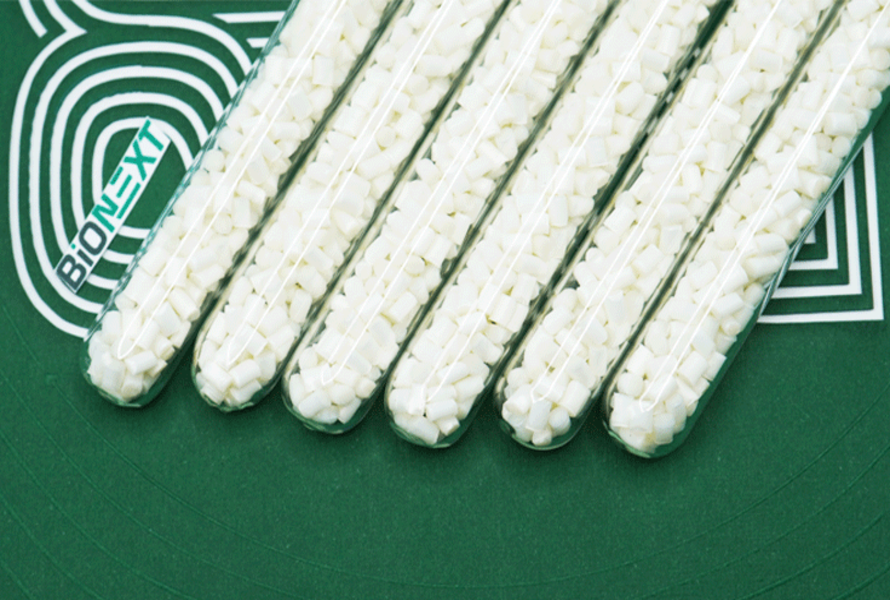
EuroPlas's BiONext bioplastic product
5. Conclusion
EuroPlas has sent you the way countries around the world handle plastic waste. In addition, we also introduce some of the company's popular BiONext bioplastic products. Please continue to follow EuroPlas to update the latest news!